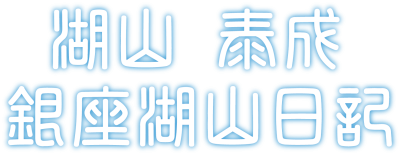Management Organization Theory by Casting and Directing

Management training cannot keep up with organizational growth.
Newcomers are not assigned posts to train executives.
The HR person who thinks about HR is the number one problem.
The training and selection of personnel manager is the most difficult.
Personnel affairs in an organization are full of contradictions.
Human resource management in the medical and welfare field, where education is valued, is more difficult than in workplaces that can be evaluated based on sales numbers.
There is a contradiction between the ideological ideals of educational welfare and performance evaluation.
Some employees have self-centered values and self-evaluation, and cannot accept the evaluation of others.
For some reason, people who are intolerant of others seek their own place in this world.
Perhaps most workplaces in society are very, very strict in evaluation.
Koyama G’s world of medical welfare is kind and considerate.
The duty to save others is to save people, so you have to be strong and full of physical and mental strength, but there are many people who want to be saved more than others.
As the Chief Human Resources Officer, I am troubled by this reality.
But that’s why people like that should be able to work in the medical welfare industry.
I avoided a company, a world of competition and the pursuit of profit, and set up a corporation in this world.
Because I myself, I’m sure, had a feeling of rejection in the business world.
to myself.
I think Koyama G is the antithesis of neo-liberalism and capitalist society.
This is also my overly idealistic view.
Even so, I would like to think that the reason why the company has grown to 14,000 employees in its 40th year in business is because some kind of truth and hope met my ideals.
Recruitment and assignment decisions are made solely on the basis of individuality and motivation.
I think Koyama G’s hiring standards are quite different from those of ordinary companies.
This is influenced by my favorite theory of theater and production.
I think of assignment as casting.
Setting up a hospital facility is like creating a story.
Management and operation are the same as long-term performances on stage.
My theory of management is in line with the theory of theater.
Personnel are common with the casting of the performers.
There are main characters and supporting characters.
In fact, a villain is also needed there.
Otherwise, it wouldn’t be a story.
You need sugar, salt, and chilli.
Otherwise, the deep flavor will not come out.
It’s a selfish organization theory, but my usual thinking seems to have elements of theater theory.
It was pointed out by the executive who consulted executive personnel.
I also realized that I needed more auditions to find a role.
I would like to have more young people participate in conferences and workshops and evaluate their personalities.
By my own discussion.
There must be more people among the 14,000.
I don’t notice, I just don’t know.
The employees who have worked hard at Koyama G for over 10 years are treasures.
The blue bird is at home.
Believing so, I will travel to the north again today to receive the award for long service.
Pulse oximeter 97/98/98
Body temperature 36.8 Blood sugar 254 Before morning excursion to cafeteria
Director of the Stanislavski system
CEO Yasunari Koyama
